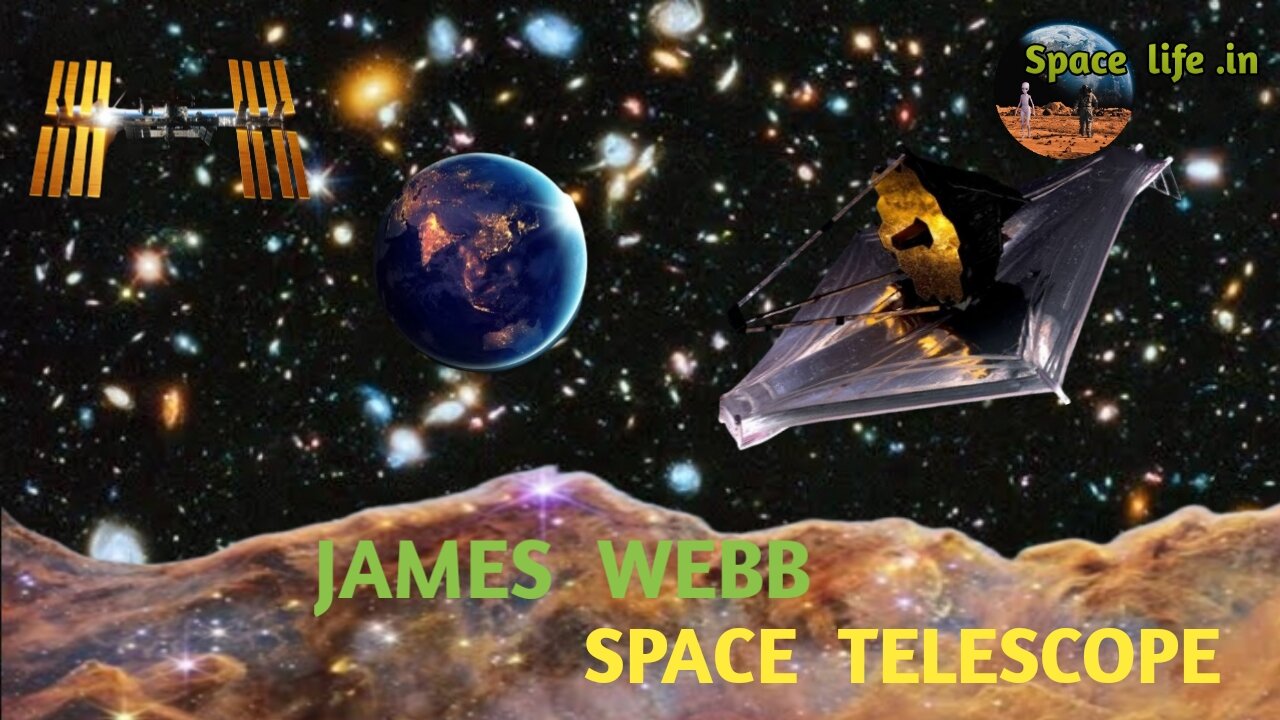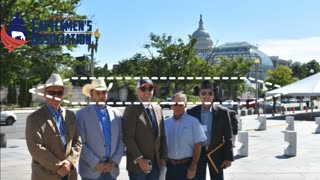Premium Only Content

James Webb Space Telescope || জেমস ওয়েব স্পেস টেলিস্কোপ |
The James Webb Space Telescope (JWST) is a space telescope designed primarily to conduct infrared astronomy. As the largest optical telescope in space, its greatly improved infrared resolution and sensitivity allow it to view objects too early, distant, or faint for the Hubble Space Telescope. This is expected to enable a broad range of investigations across the fields of astronomy and cosmology, such as observation of the first stars and the formation of the first galaxies, and detailed atmospheric characterization of potentially habitable exoplanets.
The U.S. National Aeronautics and Space Administration (NASA) led JWST's development in collaboration with the European Space Agency (ESA) and the Canadian Space Agency (CSA). The NASA Goddard Space Flight Center (GSFC) in Maryland managed telescope development, the Space Telescope Science Institute in Baltimore on the Homewood Campus of Johns Hopkins University operates JWST, and the prime contractor was Northrop Grumman. The telescope is named after James E. Webb, who was the administrator of NASA from 1961 to 1968 during the Mercury, Gemini, and Apollo programs.
The James Webb Space Telescope was launched on 25 December 2021 on an Ariane 5 rocket from Kourou, French Guiana, and arrived at the Sun–Earth L2 Lagrange point in January 2022. The first image from JWST was released to the public via a press conference on 11 July 2022.The telescope is the successor of the Hubble as NASA's flagship mission in astrophysics.
JWST's primary mirror consists of 18 hexagonal mirror segments made of gold-plated beryllium, which combined create a 6.5-meter-diameter (21 ft) mirror, compared with Hubble's 2.4 m (7 ft 10 in). This gives JWST a light-collecting area of about 25 square meters, about six times that of Hubble. Unlike Hubble, which observes in the near ultraviolet, visible, and near infrared (0.1–1.7 μm) spectra, JWST observes in a lower frequency range, from long-wavelength visible light (red) through mid-infrared (0.6–28.3 μm). The telescope must be kept extremely cold, below 50 K (−223 °C; −370 °F), such that the infrared light emitted by the telescope itself does not interfere with the collected light. It is deployed in a solar orbit near the Sun–Earth L2 Lagrange point, about 1.5 million kilometers (930,000 mi) from Earth, where its five-layer sunshield protects it from warming by the Sun, Earth, and Moon.
Mission duration :-
6 months, 29 days (elapsed)
5+1⁄2 years (primary mission)
10 years (planned)
20 years (expected life)
Initial designs for the telescope, then named the Next Generation Space Telescope, began in 1996. Two concept studies were commissioned in 1999, for a potential launch in 2007 and a US$1 billion budget. The program was plagued with enormous cost overruns and delays; a major redesign in 2005 led to the current approach, with construction completed in 2016 at a total cost of US$10 billion. The high-stakes nature of the launch and the telescope's complexity were remarked upon by the media, scientists, and engineers.
-
 LIVE
LIVE
Major League Fishing
3 days agoLIVE! - Bass Pro Tour: Stage 4 - Day 2
12,217 watching -
 LIVE
LIVE
Chicks On The Right
3 hours agoTrump Cabinet shake-up, Kamala keeps humiliating herself, FIREWORKS on CNN
2,575 watching -
 LIVE
LIVE
LFA TV
11 hours agoALL DAY LIVE STREAM - FRIDAY 5/2/25
2,596 watching -
 LIVE
LIVE
Game On!
12 hours ago $1.13 earnedTom Brady continues to laugh at the 'Brady vs Belichick' debate!
1,686 watching -
 1:58:20
1:58:20
BEK TV
1 day agoTrent Loos in the Morning 5/2/2025
23.8K1 -
 8:00
8:00
SKAP ATTACK
17 hours ago $1.69 earnedChoke GOAT: The LeBron James Story
15.4K11 -
 17:24
17:24
Tactical Considerations
14 hours ago $2.44 earnedIs The Ruger RXM Worth Your Money in 2025?
14K3 -
 3:34
3:34
The Official Steve Harvey
17 hours ago $1.19 earnedCelebrity LOLs: Behind-the-Scenes Laughs and Unfiltered Moments with Your Favorite Stars!
11.7K2 -
 8:06
8:06
ariellescarcella
1 day ago"Be Queer, Do Crime" : How About NO
13.8K9 -
 4:31
4:31
The Shannon Joy Show
14 hours ago💣Economic Detonation! Is Trump Making It Worse_ Prepare NOW!
12.5K12